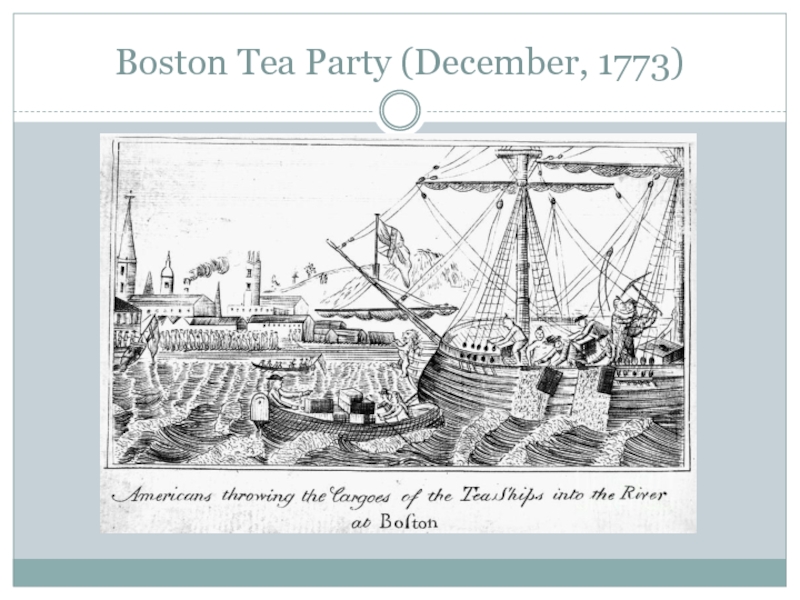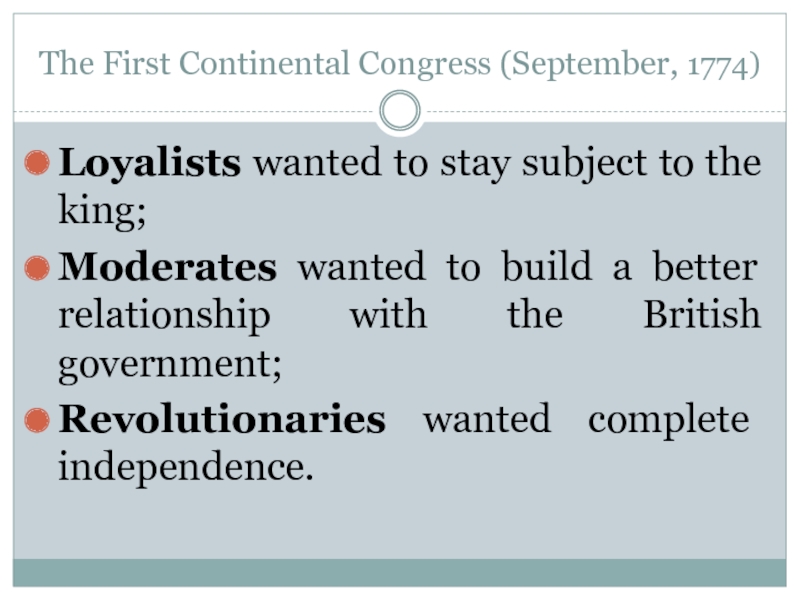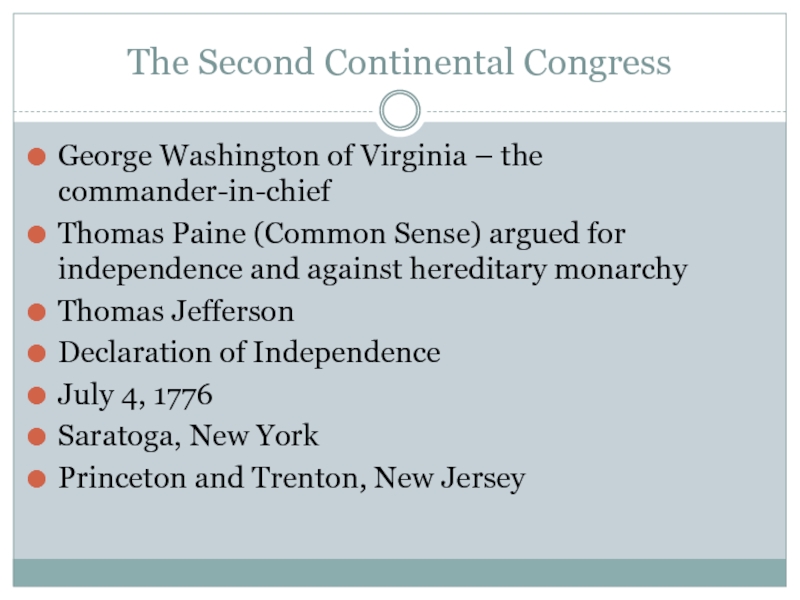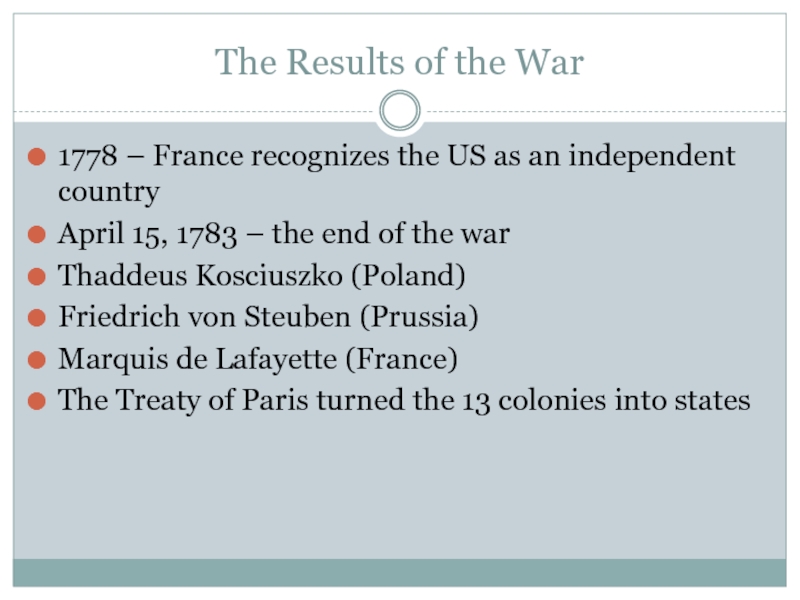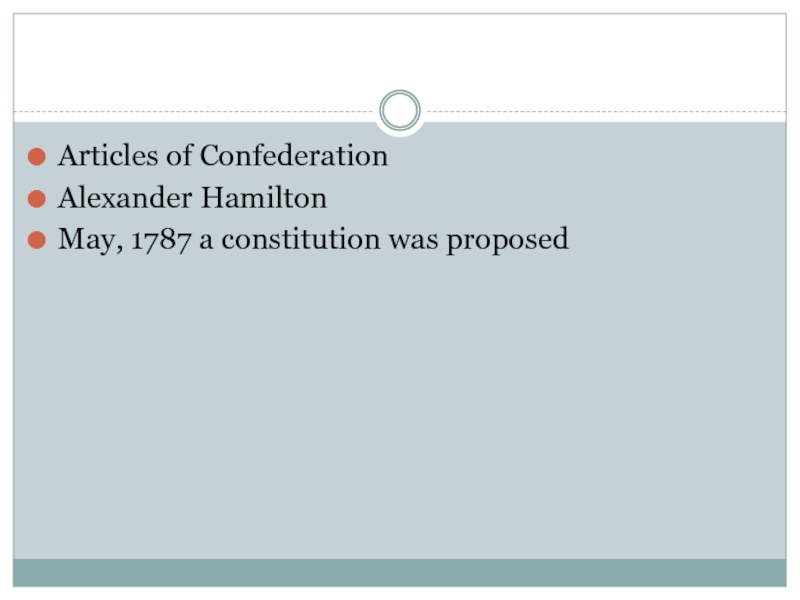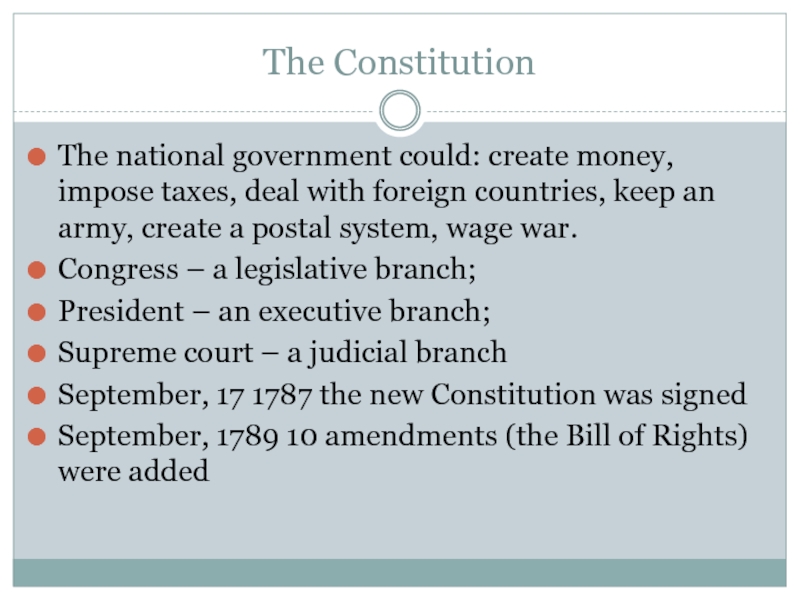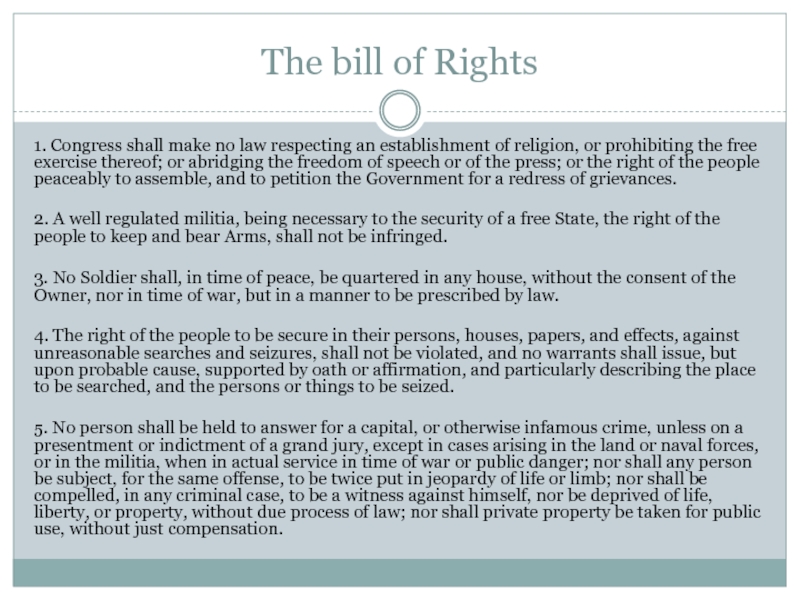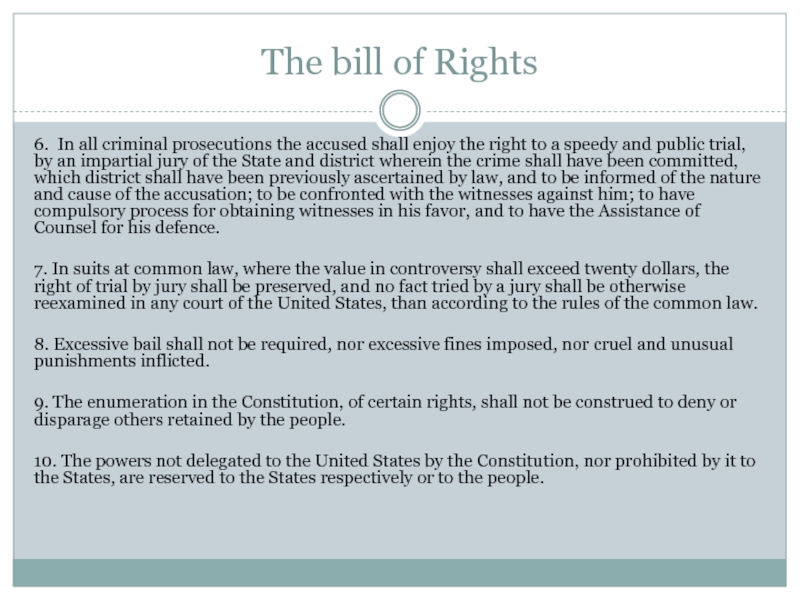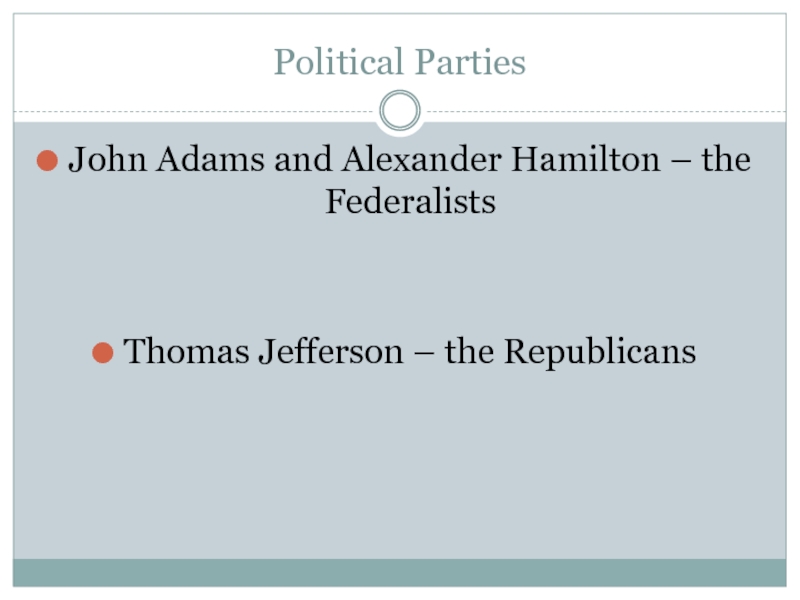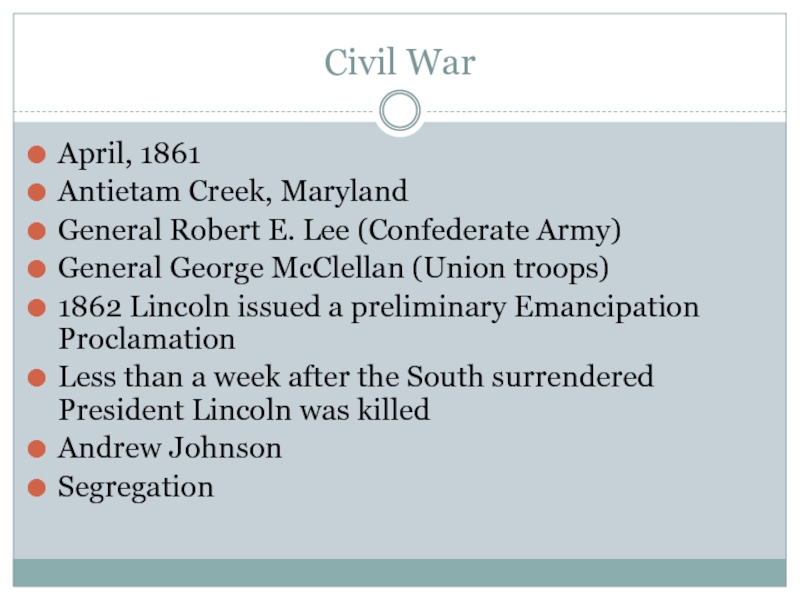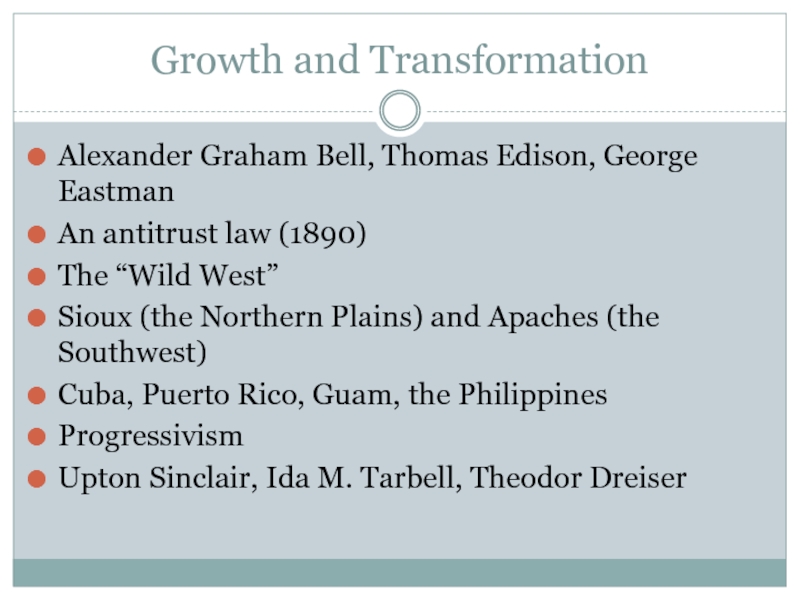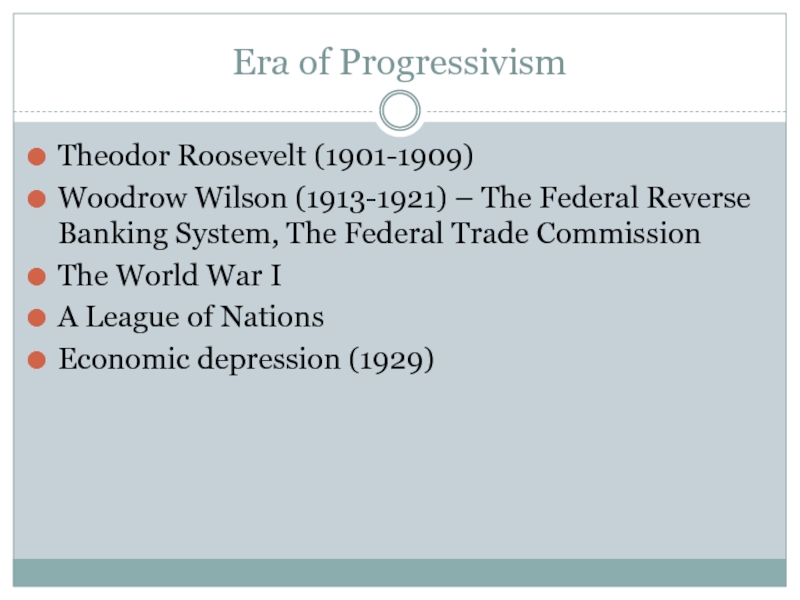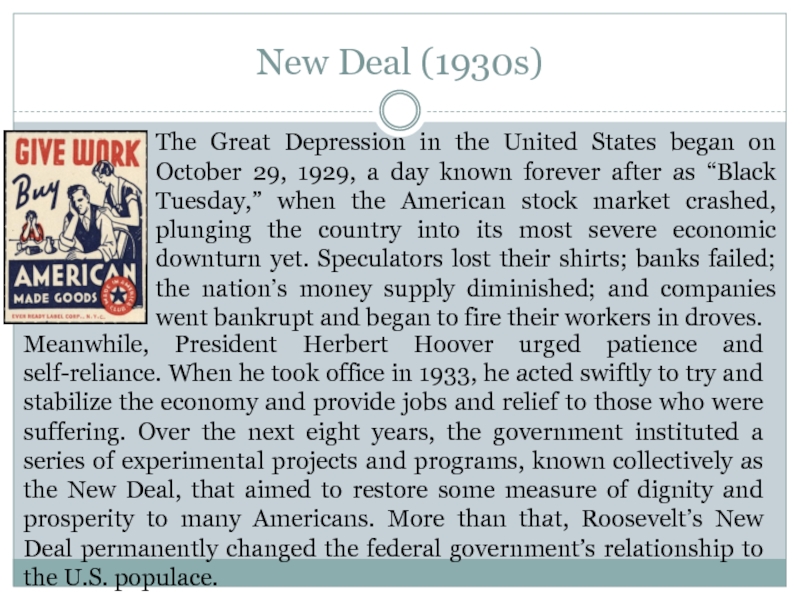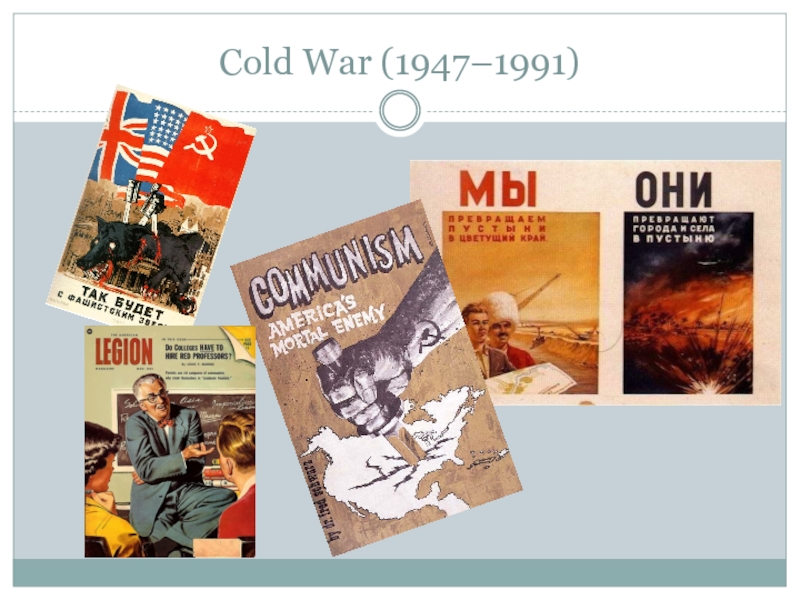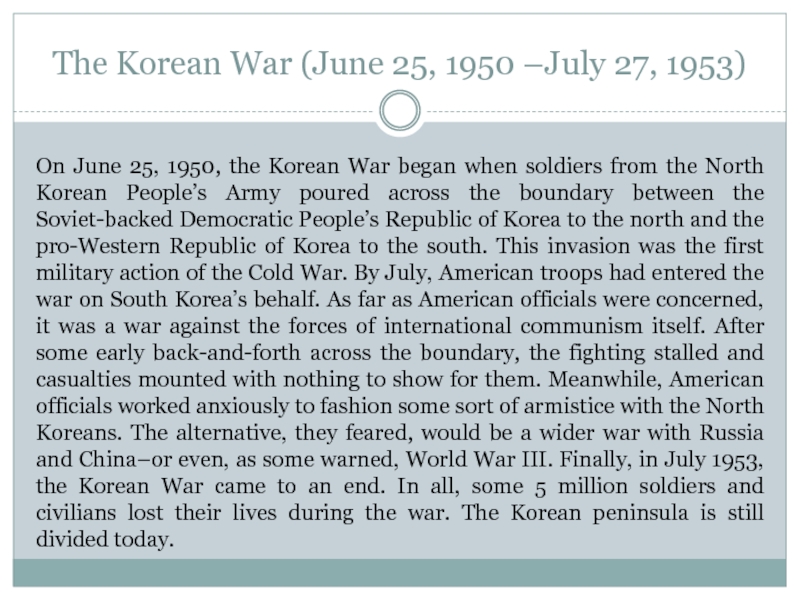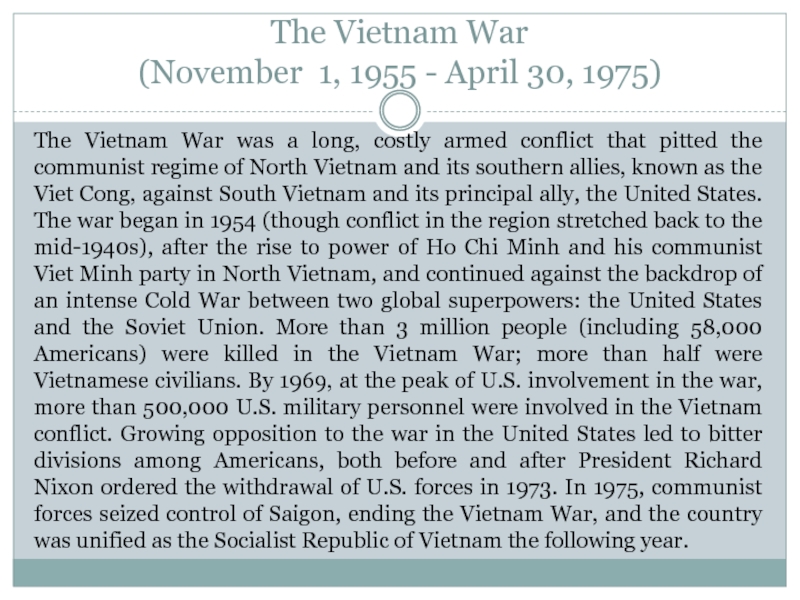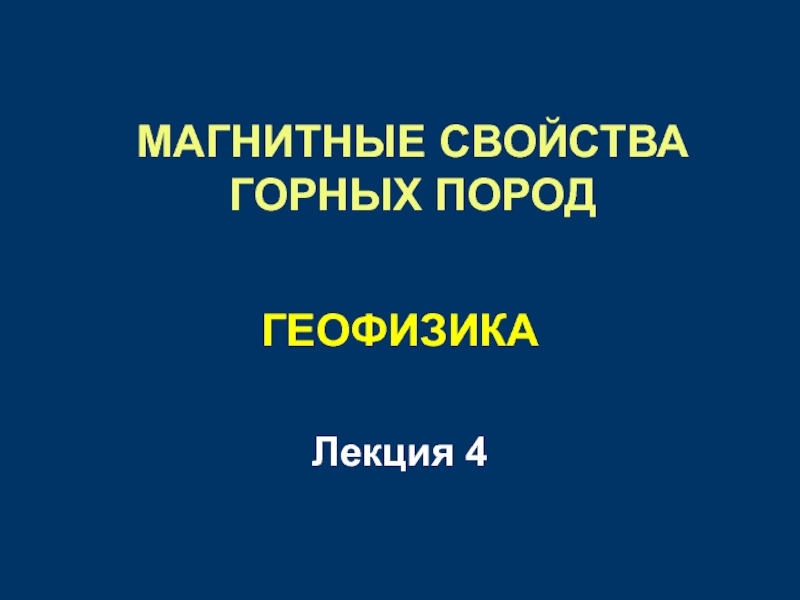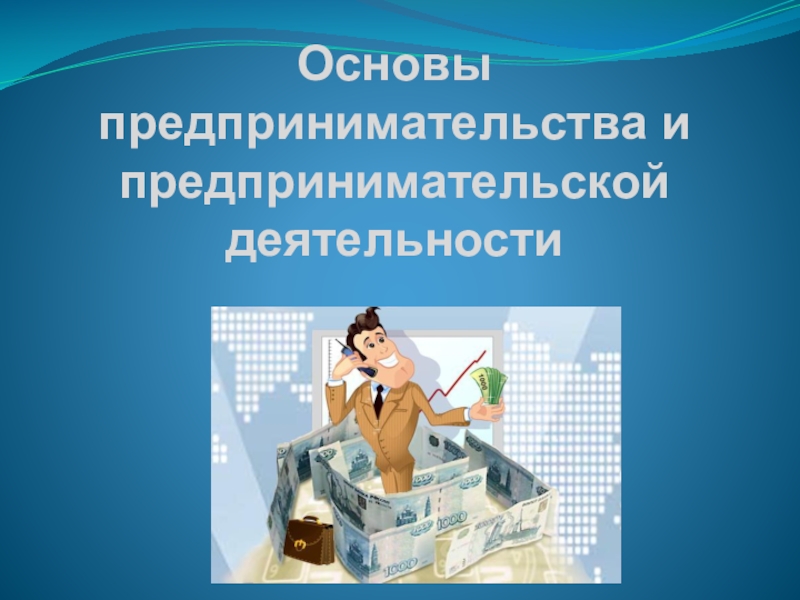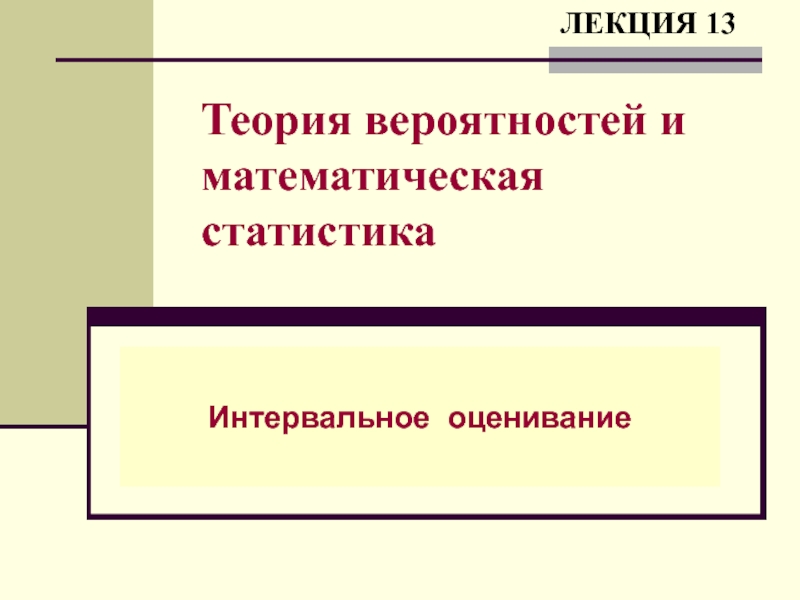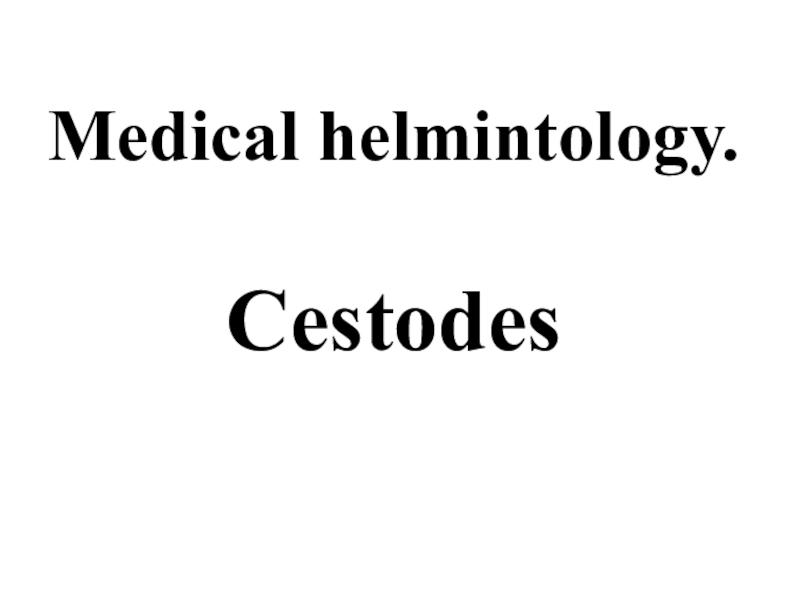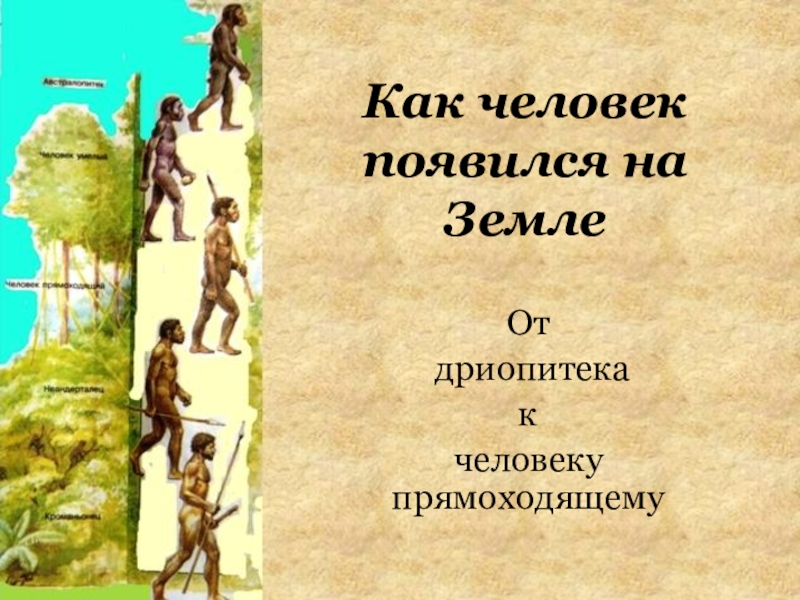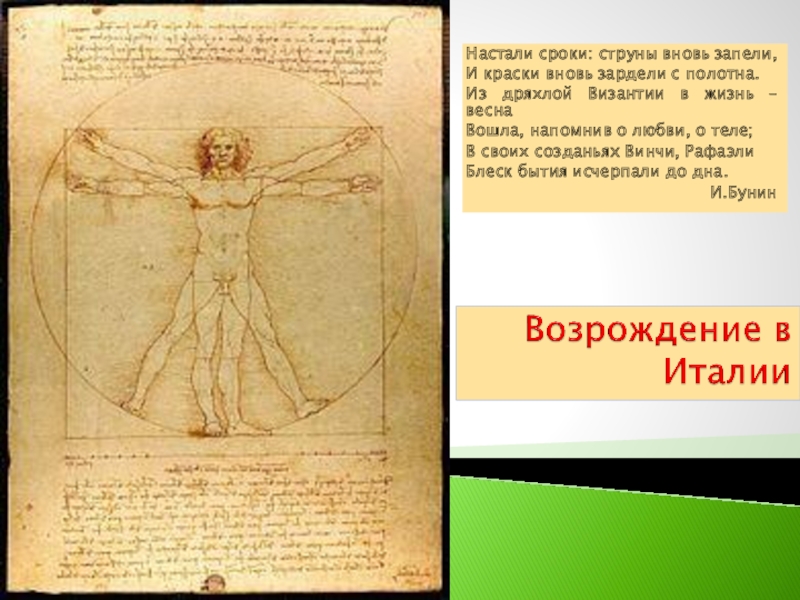Разделы презентаций
- Разное
- Английский язык
- Астрономия
- Алгебра
- Биология
- География
- Геометрия
- Детские презентации
- Информатика
- История
- Литература
- Математика
- Медицина
- Менеджмент
- Музыка
- МХК
- Немецкий язык
- ОБЖ
- Обществознание
- Окружающий мир
- Педагогика
- Русский язык
- Технология
- Физика
- Философия
- Химия
- Шаблоны, картинки для презентаций
- Экология
- Экономика
- Юриспруденция
An Outline of American History
Содержание
- 1. An Outline of American History
- 2. PlanPre-colonial PeriodPeriod of ColonizationRevolutionFormation of National Government
- 3. PlanWorld War I, Prosperity and Great DepressionNew
- 4. Pre-colonial PeriodHohokam, Adenans, Hopewellians, and AnasaziHieroglyphicsHopi and
- 5. Serpent MoundSerpent Mound is a man-made earthwork
- 6. Period of ColonizationChristopher Columbus (1492, the Caribbean
- 7. The first 13 colonies
- 8. Three RegionsNew England: Massachusetts, Connecticut, Rhode Island,
- 9. The Royal Proclamation (1763) restricted the colonies
- 10. Samuel Adams of MassachusettsSamuel Adams (September 27
- 11. Boston Tea Party (December, 1773)
- 12. The First Continental Congress (September, 1774)Loyalists wanted
- 13. The American RevolutionApril 19, 1775LexingtonMinutemen
- 14. The Second Continental CongressGeorge Washington of Virginia
- 15. The Results of the War1778 – France
- 16. Articles of ConfederationAlexander HamiltonMay, 1787 a constitution was proposed
- 17. The ConstitutionThe national government could: create money,
- 18. The bill of Rights1. Congress shall make
- 19. The bill of Rights6. In all criminal
- 20. George Washington February 22, 1732 –
- 21. Political PartiesJohn Adams and Alexander Hamilton – the FederalistsThomas Jefferson – the Republicans
- 22. Abraham Lincoln February 12, 1809 –
- 23. Civil WarApril, 1861Antietam Creek, MarylandGeneral Robert E.
- 24. Growth and TransformationAlexander Graham Bell, Thomas Edison,
- 25. Era of ProgressivismTheodor Roosevelt (1901-1909)Woodrow Wilson (1913-1921)
- 26. New Deal (1930s)The Great Depression in the
- 27. Pearl Harbor, Hawaii (December 7, 1941)
- 28. Hiroshima and Nagasaki August 6 and August 9, 1945
- 29. Cold War (1947–1991)
- 30. The Korean War (June 25, 1950 –July
- 31. The Vietnam War (November 1, 1955 -
- 32. Cultural ChangeLyndon JonsonMartin Luther King Jr.Betty Friedan, Gloria SteinemBen Nighthorse CampbellCesar ChavezThe Earth Day (1970)
- 33. Скачать презентанцию
Слайды и текст этой презентации
Слайд 2Plan
Pre-colonial Period
Period of Colonization
Revolution
Formation of National Government and Early Years
of the US
Слайд 3Plan
World War I, Prosperity and Great Depression
New Deal and World
War II
Cold War, Korean Conflict, Vietnam
Cultural Change 1950-1980
The End of
the 20th CenturyСлайд 4Pre-colonial Period
Hohokam, Adenans, Hopewellians, and Anasazi
Hieroglyphics
Hopi and Zuni
The Norse from
Greenland (Erik the Red) started a settlement in 985
Leif explored
CanadaNewfoundland
Слайд 5Serpent Mound
Serpent Mound is a man-made earthwork in the shape
of a long, uncoiling serpent nearly a quarter of a
mile long. Created between 1000 and 1500 AD for unknown purposes, it is now protected in a state park in Ohio.Слайд 6Period of Colonization
Christopher Columbus (1492, the Caribbean Sea)
Jon Cabot (1497,
eastern Canada)
Juan Ponce de Leon (1513, Florida)
Hernando de Soto (1539,
Florida and all the way to the Mississippi River)Francisco Vazquez de Coronado (1540, Mexico, Grand Canyon, the Great Planes)
Seven Cities of Cibola
Giovanni da Verrazano, Jacues Cartier, Amerigo Vespucci
St Augustine, Florida
Virginia and Massachusetts
Слайд 8Three Regions
New England: Massachusetts, Connecticut, Rhode Island, New Hampshire
Middle Colonies:
New York, New Jersey, Pennsylvania, Delaware, Maryland
Southern Colonies: Virginia,
Georgia, North Carolina, South CarolinaСлайд 9The Royal Proclamation (1763) restricted the colonies from settling new
land.
The Currency Act (1764) made it illegal to print paper
money.The Quartering Act (1765) forced the colonists to provide food and housing for royal soldiers.
The Stamp Act (1765) taxed all legal papers, licenses, newspapers, and leases.
Слайд 10Samuel Adams of Massachusetts
Samuel Adams (September 27 [O.S. September 16]
1722 – October 2, 1803) was an American statesman, political
philosopher, and one of the Founding Fathers of the United States. As a politician in colonial Massachusetts, Adams was a leader of the movement that became the American Revolution, and was one of the architects of the principles of American republicanism that shaped the political culture of the United States. He was a second cousin to President John Adams.Слайд 12The First Continental Congress (September, 1774)
Loyalists wanted to stay subject
to the king;
Moderates wanted to build a better relationship with
the British government;Revolutionaries wanted complete independence.
Слайд 14The Second Continental Congress
George Washington of Virginia – the commander-in-chief
Thomas
Paine (Common Sense) argued for independence and against hereditary monarchy
Thomas
JeffersonDeclaration of Independence
July 4, 1776
Saratoga, New York
Princeton and Trenton, New Jersey
Слайд 15The Results of the War
1778 – France recognizes the US
as an independent country
April 15, 1783 – the end of
the warThaddeus Kosciuszko (Poland)
Friedrich von Steuben (Prussia)
Marquis de Lafayette (France)
The Treaty of Paris turned the 13 colonies into states
Слайд 17The Constitution
The national government could: create money, impose taxes, deal
with foreign countries, keep an army, create a postal system,
wage war.Congress – a legislative branch;
President – an executive branch;
Supreme court – a judicial branch
September, 17 1787 the new Constitution was signed
September, 1789 10 amendments (the Bill of Rights) were added
Слайд 18The bill of Rights
1. Congress shall make no law respecting
an establishment of religion, or prohibiting the free exercise thereof;
or abridging the freedom of speech or of the press; or the right of the people peaceably to assemble, and to petition the Government for a redress of grievances.2. A well regulated militia, being necessary to the security of a free State, the right of the people to keep and bear Arms, shall not be infringed.
3. No Soldier shall, in time of peace, be quartered in any house, without the consent of the Owner, nor in time of war, but in a manner to be prescribed by law.
4. The right of the people to be secure in their persons, houses, papers, and effects, against unreasonable searches and seizures, shall not be violated, and no warrants shall issue, but upon probable cause, supported by oath or affirmation, and particularly describing the place to be searched, and the persons or things to be seized.
5. No person shall be held to answer for a capital, or otherwise infamous crime, unless on a presentment or indictment of a grand jury, except in cases arising in the land or naval forces, or in the militia, when in actual service in time of war or public danger; nor shall any person be subject, for the same offense, to be twice put in jeopardy of life or limb; nor shall be compelled, in any criminal case, to be a witness against himself, nor be deprived of life, liberty, or property, without due process of law; nor shall private property be taken for public use, without just compensation.
Слайд 19The bill of Rights
6. In all criminal prosecutions the accused
shall enjoy the right to a speedy and public trial,
by an impartial jury of the State and district wherein the crime shall have been committed, which district shall have been previously ascertained by law, and to be informed of the nature and cause of the accusation; to be confronted with the witnesses against him; to have compulsory process for obtaining witnesses in his favor, and to have the Assistance of Counsel for his defence.7. In suits at common law, where the value in controversy shall exceed twenty dollars, the right of trial by jury shall be preserved, and no fact tried by a jury shall be otherwise reexamined in any court of the United States, than according to the rules of the common law.
8. Excessive bail shall not be required, nor excessive fines imposed, nor cruel and unusual punishments inflicted.
9. The enumeration in the Constitution, of certain rights, shall not be construed to deny or disparage others retained by the people.
10. The powers not delegated to the United States by the Constitution, nor prohibited by it to the States, are reserved to the States respectively or to the people.
Слайд 20George Washington February 22, 1732 –
December 14, 1799
Became the
first American president (April 30, 1789)
Created the Treasury, Justice, and
War departments (the cabinet)The Supreme Court was made up by one chief justice and five (now eight) associate justices
Tree circuit courts and 13 district courts were created
Слайд 21Political Parties
John Adams and Alexander Hamilton – the Federalists
Thomas Jefferson
– the Republicans
Слайд 22Abraham Lincoln February 12, 1809 –
April 15, 1865
“A house
divided against itself cannot stand.”
“This government cannot endure permanently half-slave
and half-free.”Слайд 23Civil War
April, 1861
Antietam Creek, Maryland
General Robert E. Lee (Confederate Army)
General
George McClellan (Union troops)
1862 Lincoln issued a preliminary Emancipation Proclamation
Less
than a week after the South surrendered President Lincoln was killedAndrew Johnson
Segregation
Слайд 24Growth and Transformation
Alexander Graham Bell, Thomas Edison, George Eastman
An antitrust
law (1890)
The “Wild West”
Sioux (the Northern Plains) and Apaches (the
Southwest)Cuba, Puerto Rico, Guam, the Philippines
Progressivism
Upton Sinclair, Ida M. Tarbell, Theodor Dreiser
Слайд 25Era of Progressivism
Theodor Roosevelt (1901-1909)
Woodrow Wilson (1913-1921) – The Federal
Reverse Banking System, The Federal Trade Commission
The World War I
A
League of NationsEconomic depression (1929)
Слайд 26New Deal (1930s)
The Great Depression in the United States began
on October 29, 1929, a day known forever after as
“Black Tuesday,” when the American stock market crashed, plunging the country into its most severe economic downturn yet. Speculators lost their shirts; banks failed; the nation’s money supply diminished; and companies went bankrupt and began to fire their workers in droves.Meanwhile, President Herbert Hoover urged patience and self-reliance. When he took office in 1933, he acted swiftly to try and stabilize the economy and provide jobs and relief to those who were suffering. Over the next eight years, the government instituted a series of experimental projects and programs, known collectively as the New Deal, that aimed to restore some measure of dignity and prosperity to many Americans. More than that, Roosevelt’s New Deal permanently changed the federal government’s relationship to the U.S. populace.
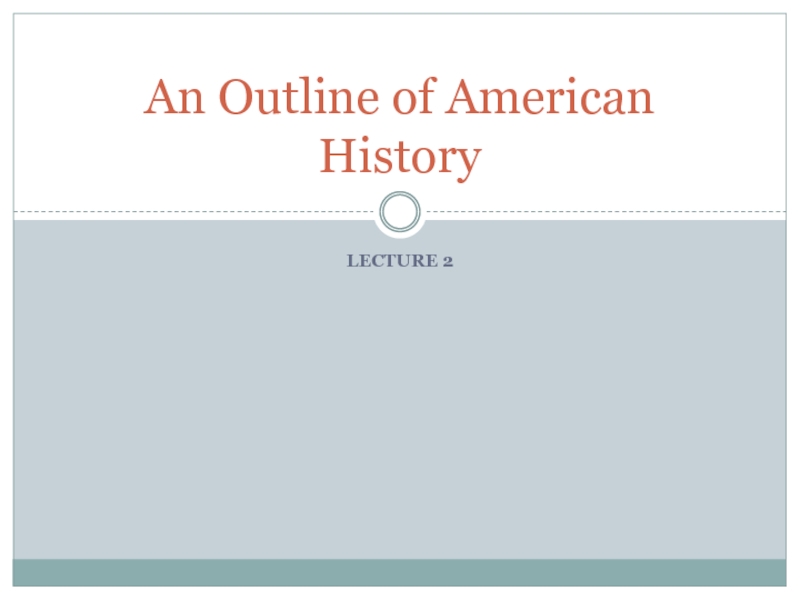
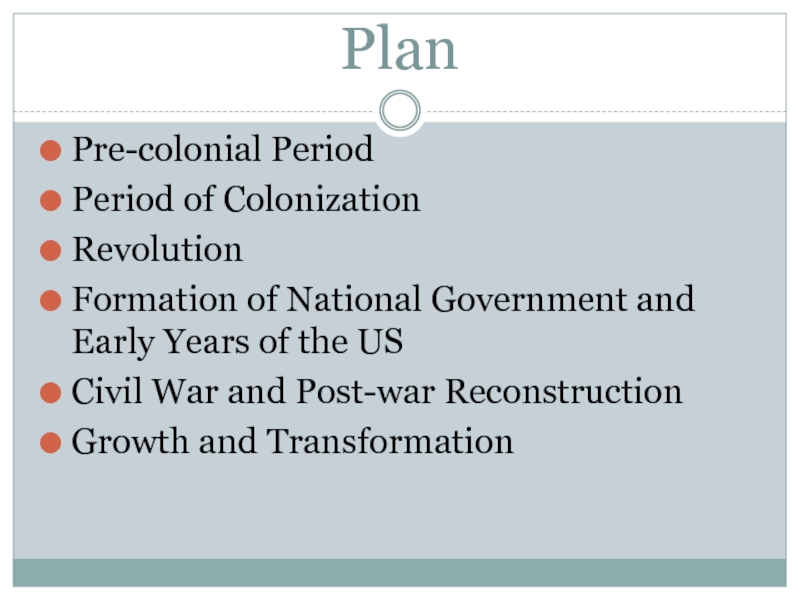
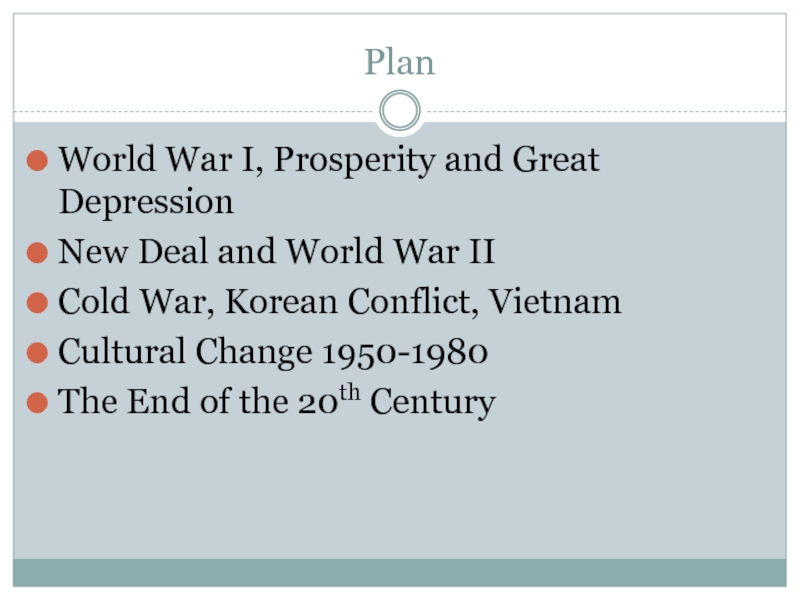
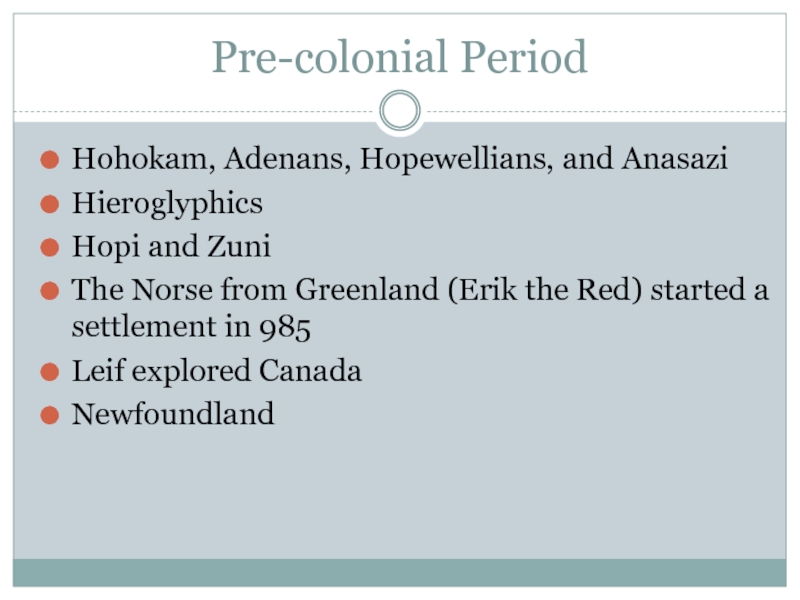

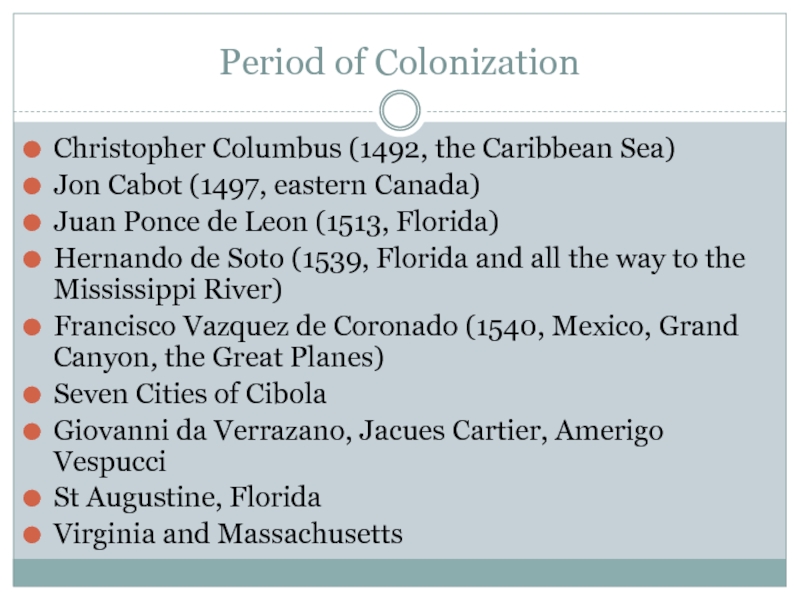
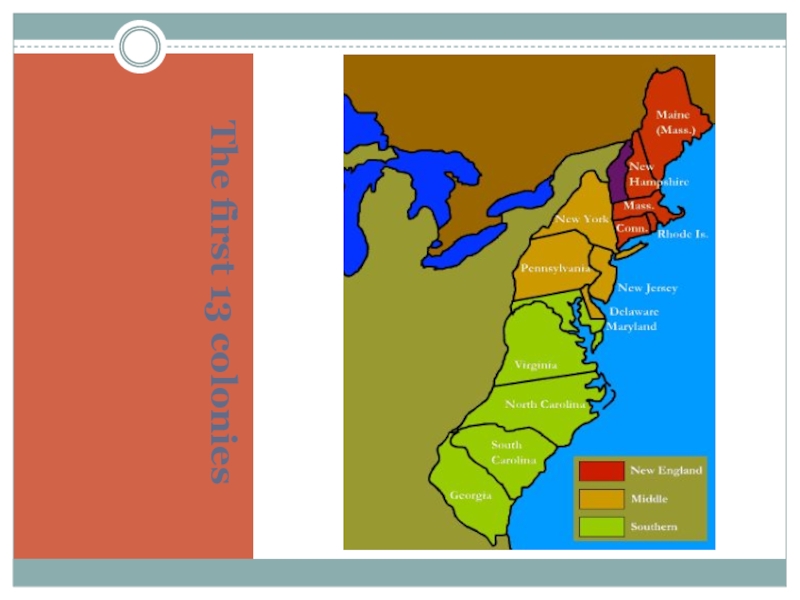
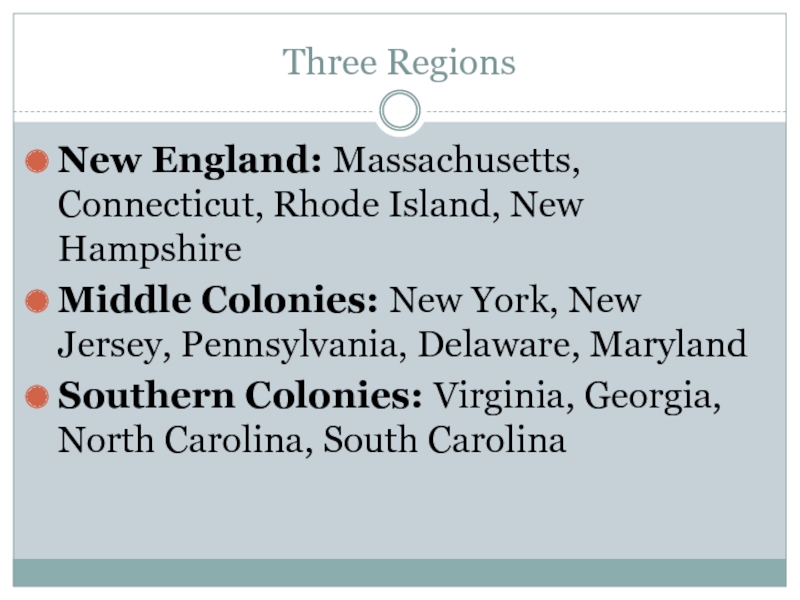
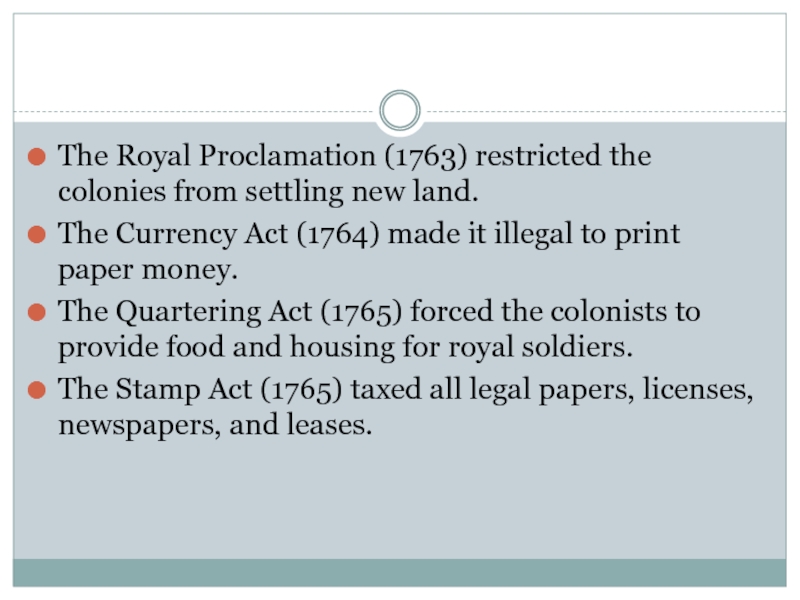
![An Outline of American History Samuel Adams of MassachusettsSamuel Adams (September 27 [O.S. September 16] 1722 Samuel Adams of MassachusettsSamuel Adams (September 27 [O.S. September 16] 1722 – October 2, 1803) was an](/img/thumbs/21b47c09f8c73f0dcc4122b1fd2e2d5e-800x.jpg)
